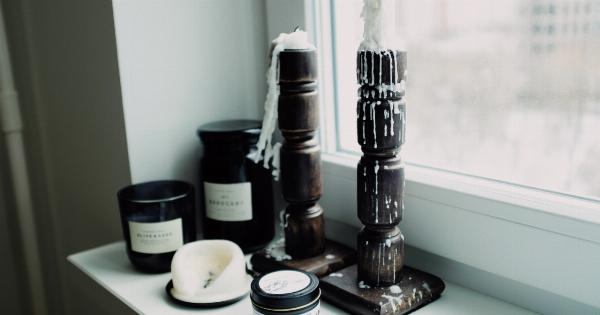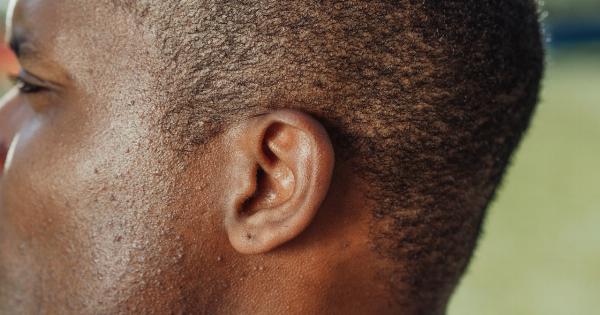Earwax is a natural part of the body’s defense system. It helps to keep your ear canal clean and lubricated while protecting the ear against infections and foreign particles.
However, sometimes, earwax can build up, causing discomfort, pain, or even hearing loss. To avoid these problems, here are 30 effective steps to clean your ears:.
Step 1: Gather the necessary equipment
Before you start cleaning your ears, make sure you have the necessary equipment, including a soft towel, a bulb syringe or an earwax removal kit, and some warm water.
You may also use a cotton swab or earplugs, but be careful not to insert them too deeply into your ear canal.
Step 2: Wash your hands
It’s essential to wash your hands before handling any equipment or touching your ears to avoid infecting them with bacteria or other germs.
Step 3: Soften the earwax
To soften the earwax, you may use an over-the-counter earwax softener or a few drops of mineral oil, olive oil, or hydrogen peroxide. Lie on your side and place a few drops of your chosen fluid into your ear canal.
Remain in that position for about 5 to 10 minutes. Repeat on the other side if necessary.
Step 4: Rinse the ear canal
Gently fill a bulb syringe or earwax removal kit with warm water and five a few gentle sprays into your ear canal to rinse the softened earwax out. Tilt your head and let the water drain into a towel. Repeat on the other side.
Step 5: Dry your ears
Use a soft towel or a hairdryer to dry your outer ear and ear canal gently. Do not insert anything into the ear canal, such as cotton swabs, as this can cause damage.
Step 6: Use a saline solution
You may also use a saline solution made of salt and warm water instead of oil. Mix a quarter of a teaspoon of salt with a cup of water and fill the bulb syringe or earwax removal kit with the solution.
Follow the same procedure as before to rinse out the earwax.
Step 7: Use hydrogen peroxide
You may use hydrogen peroxide to clean your ears if you have excessive earwax buildup. It helps to soften the earwax, kill bacteria, and remove debris from the ear canal. Mix equal parts hydrogen peroxide and distilled water.
Fill the bulb syringe with the mixture and rinse the ear canal with it.
Step 8: Use a warm compress
If you have an earache or discomfort in your ear, place a warm compress on your ear. The heat can help to soothe the pain and soften the earwax.
Step 9: Use olive oil
You may use olive oil to remove excess earwax buildup. Warm up a small amount of olive oil and place a few drops in each ear.
Lay on your side for about 10 minutes to let the oil soften the earwax before rinsing it out with warm water or a saline solution.
Step 10: Use earwax removal drops
You may also use earwax removal drops that contain carbamide peroxide to remove earwax buildup. Lie on your ear and place a few drops into your ear canal. Wait for about 10 minutes before washing out with warm water or a saline solution.
Step 11: Gargle with warm salt water
If you have a sore throat or tonsillitis, gargle with a warm saltwater solution. Mix a half teaspoon of salt with a cup of warm water.
Step 12: Use apple cider vinegar
Apple cider vinegar has antibacterial and antifungal properties that can help to relieve ear infections. Mix equal parts water and apple cider vinegar and place a few drops in your ear canal. Wait for about 5 minutes before draining out the mixture.
Step 13: Chew gum
Chewing gum and swallowing can help to move the earwax out of the ear canal and prevent buildup.
Step 14: Practice good hygiene
To avoid ear infections and earwax buildup, practice good hygiene habits such as washing your ears with soap and water and avoiding inserting foreign objects, such as cotton swabs or bobby pins, into your ear canal.
Step 15: Avoid loud noises
Avoid loud noises that can damage your eardrums or cause tinnitus. Wear earplugs or earmuffs when exposed to loud sounds, including concerts, fireworks shows, or noisy work environments.
Step 16: Quit smoking
Smoking can cause ear infections and hearing loss. Quit smoking to avoid the risk or further damage to your hearing and health.
Step 17: Get a hearing test
Get a hearing test regularly to monitor your hearing and detect hearing problems early on. This applies especially to the elderly or those who work in noisy environments.
Step 18: Exercise regularly
Exercise helps to improve blood flow to the inner ear, which can prevent hearing loss and tinnitus. Engage in regular physical activity such as walking, jogging, or cycling.
Step 19: Avoid ear candling
Ear candling is a practice that involves inserting a hollow candle into the ear canal and lighting it to create a vacuum that removes earwax. However, this practice is ineffective and dangerous and can harm your ears and overall health.
Avoid ear candling at all costs.
Step 20: Visit a doctor
If you have excessive earwax buildup, pain, discomfort, or hearing problems, visit a doctor or an audiologist for a proper diagnosis and treatment.
Step 21: Use a clean towel
Use a clean and soft towel to dry your ears after cleaning or showering. Do not share towels with others to avoid transferring bacteria or germs.
Step 22: Use earplugs when swimming
Wear earplugs when swimming to prevent water from entering your ears and causing infections. Dry your ears thoroughly after swimming or taking a shower.
Step 23: Avoid using headphones for long periods
Avoid using headphones for long periods, especially at high volumes, as this can damage your hearing and cause hearing loss or tinnitus.
Step 24: Avoid using ear drops
Avoid using ear drops, especially those that contain alcohol, as they can dry out your ear canal and cause irritation or infection.
Step 25: Avoid touching your ears too often
Avoid touching your ears too often, as this can cause infections or transfer bacteria or germs from your hands to your ears.
Step 26: Practice relaxation techniques
Practice relaxation techniques, such as meditation or yoga, to reduce stress. Stress is a common cause of tinnitus and hearing loss.
Step 27: Get enough sleep
Get enough sleep to allow your body to repair and restore itself, including your ears and brain. Lack of sleep or poor sleep quality can cause tinnitus and other health problems.
Step 28: Drink enough water
Drink enough water to keep your body and ears hydrated. Dehydration can cause dry skin, including in the ear canal, which can lead to irritation and infection.
Step 29: Eat a balanced diet
Eat a balanced and nutritious diet that includes vitamins and minerals essential for ear and overall health. These include vitamin C, vitamin E, magnesium, zinc, and omega-3 fatty acids.
Step 30: Avoid alcohol and caffeine
Avoid alcohol and caffeine, as they can cause dehydration and affect your hearing and brain function. Limit your intake of these substances and drink plenty of water instead.





























